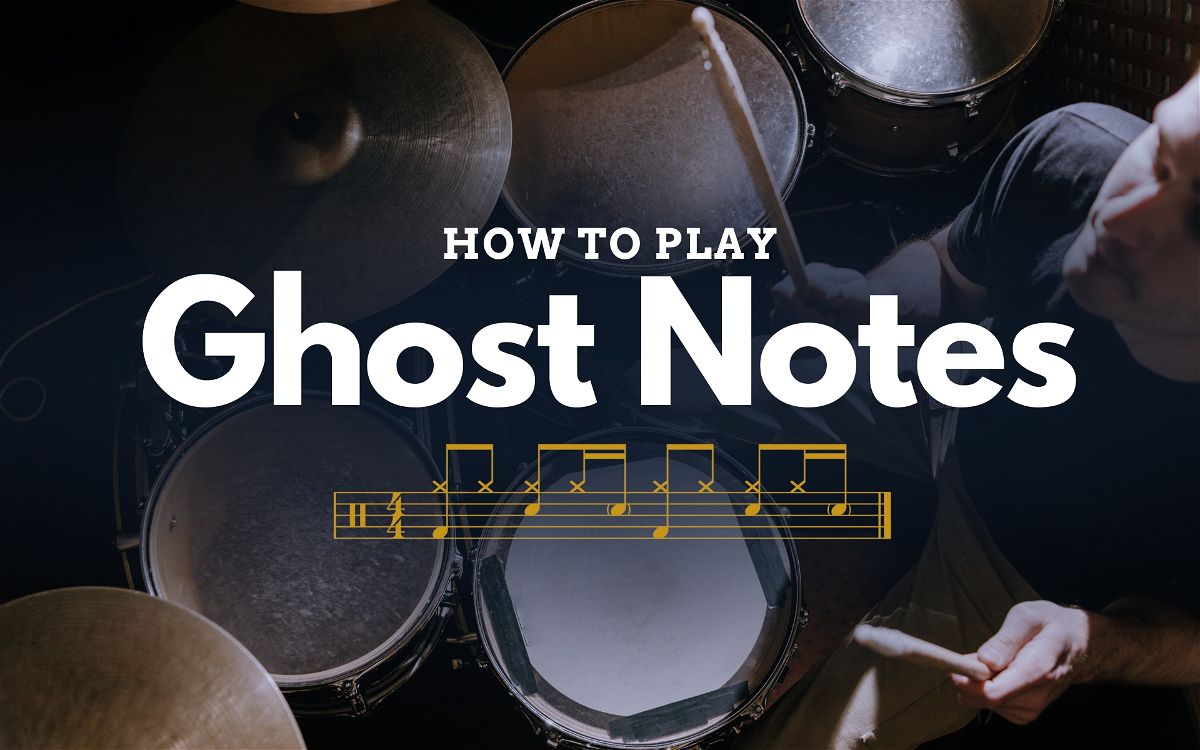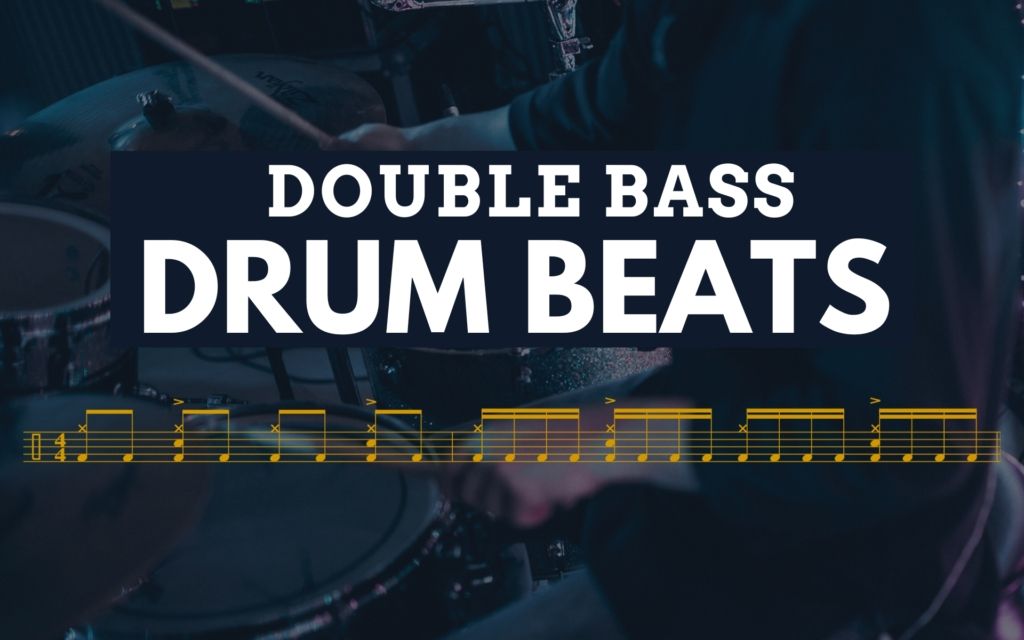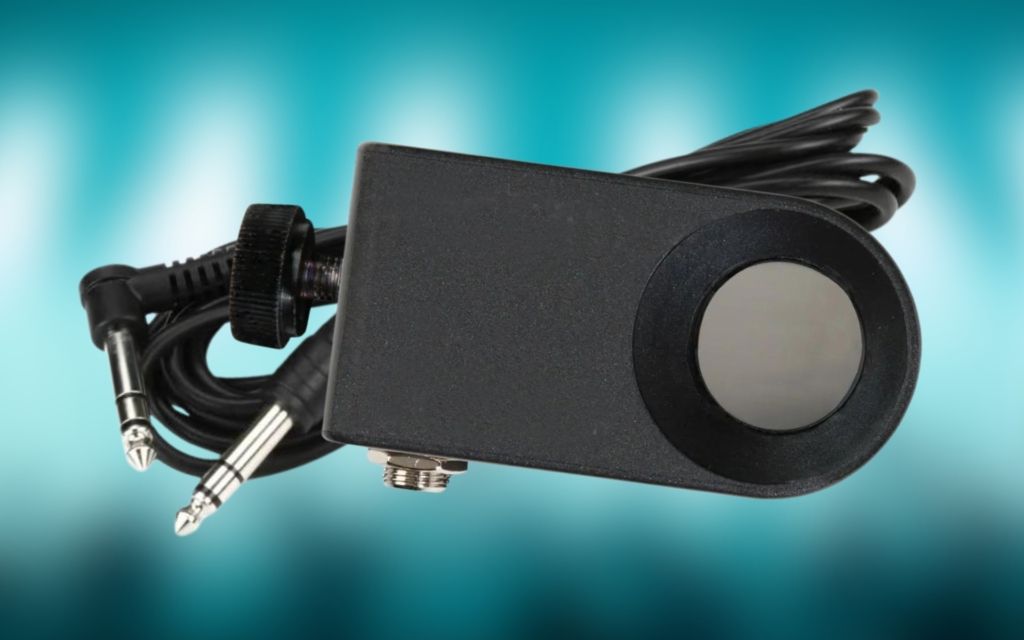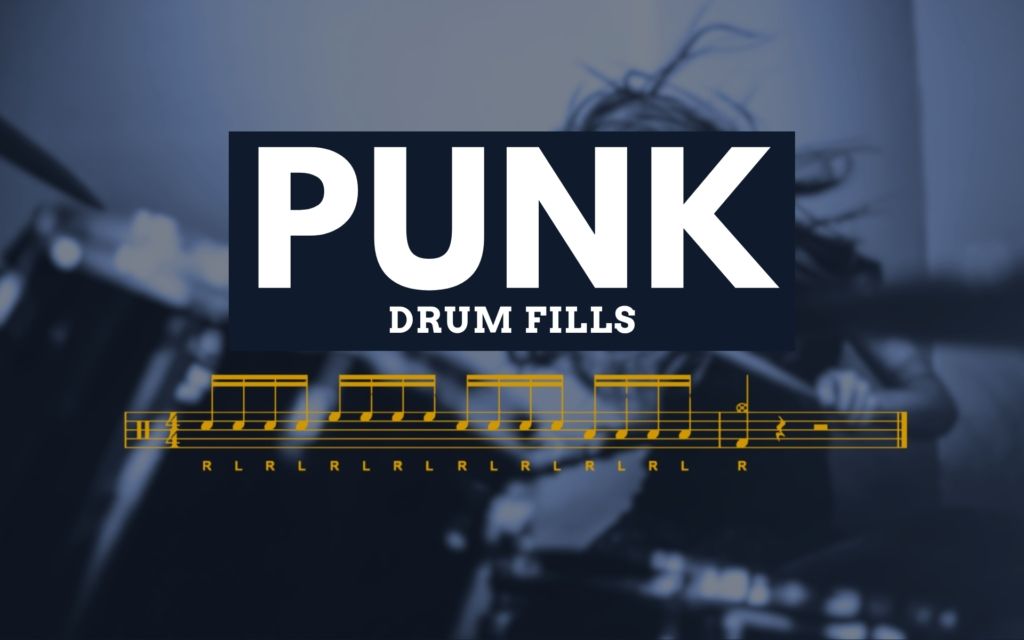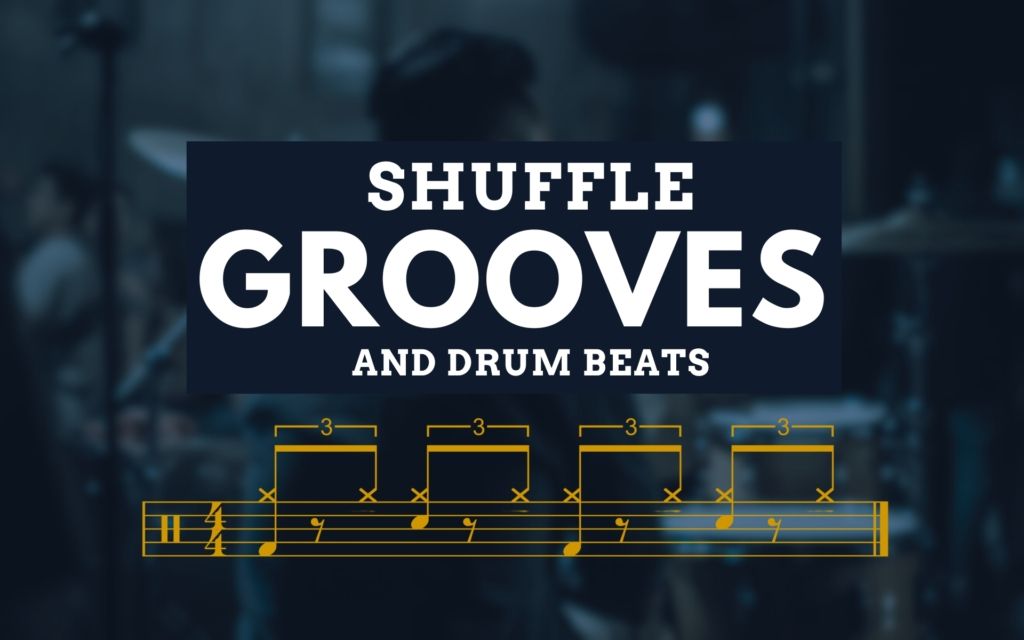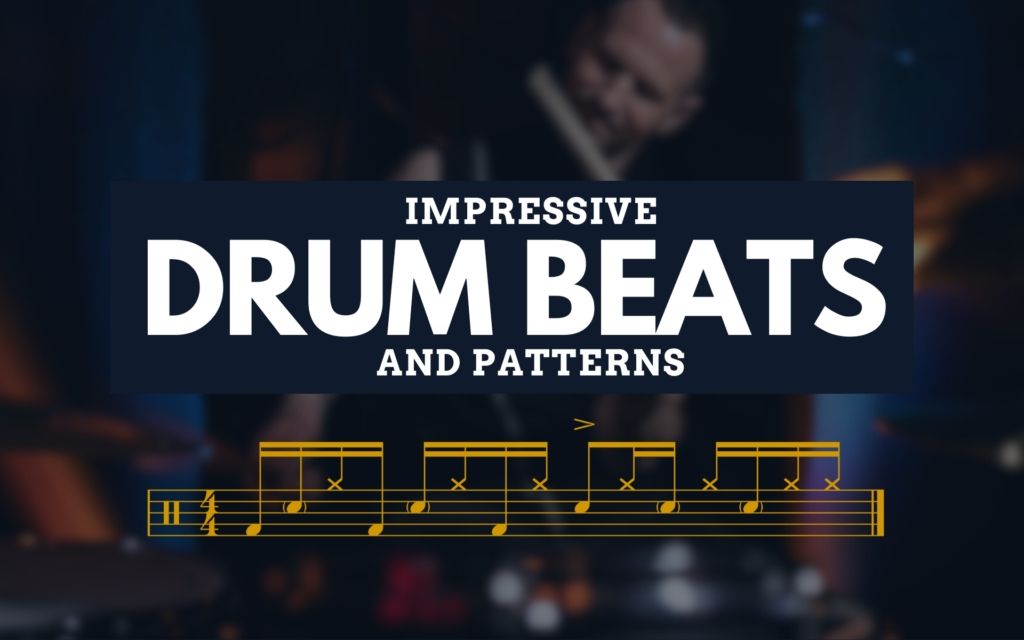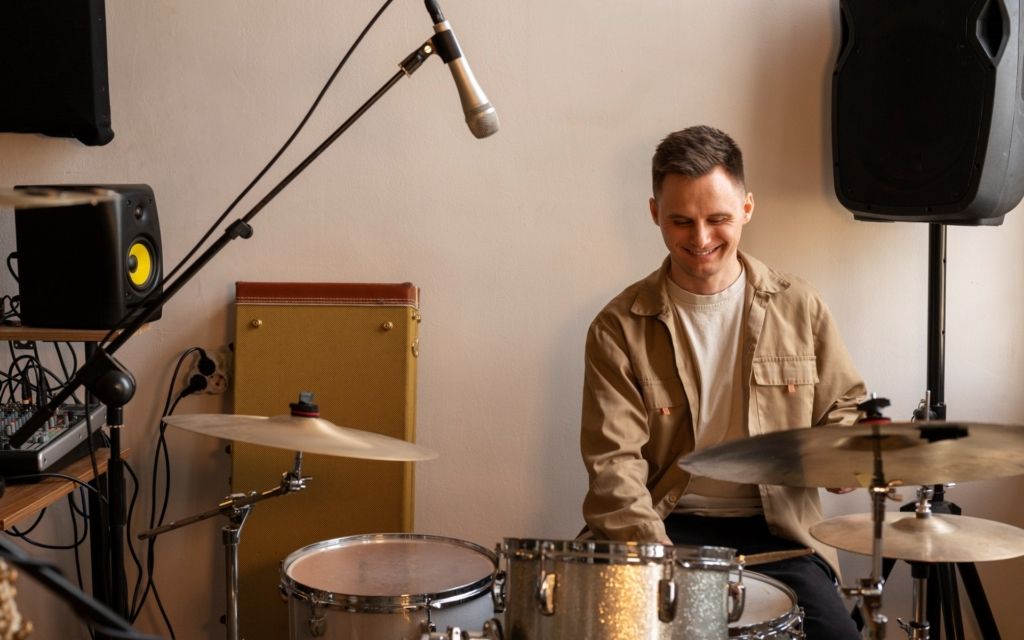Ghost notes are an incredibly important technique in drumming. They add variety to what you’re playing, giving grooves and drum fills dynamic texture.
They can be a bit tricky to learn at first, but they make your playing sound a lot better once you can pull them out effortlessly.
In this guide, I’m going to show you how to play ghost notes on the snare drum in the best way. I’ll also give you several exercises to develop your wrist control to allow you to play better ghost note ideas.
Contents
What are Ghost Notes?
A typical ghost note is just a soft note that you play with a drumstick. An accent is when you hit harder to get louder sounds, while a ghost note is the exact opposite. You strike a drum softer so that it produces less volume than the other notes that you’re playing.
When you read sheet music, a ghost note is typically written with brackets around it. This clearly separates ghost strokes from main strokes and accented notes.
What is the Purpose of Ghost Notes?
The main purpose of ghost notes is to add dynamic variety to your drumming. If all your strokes had the same volume, your drum beats and drum fill would sound quite plain.
With more ups and downs between your stroke intensity, your drumming will start to sound a bit more interesting and musical.
You can also use ghost notes to give a greater anchor to whatever subdivision you’re playing in. If you’re playing an eighth note drum beat, playing a few 16th notes as ghost notes on the snare drum will make the beat sound a lot tighter and more refined.
Ghost Note Technique

Volume
The main aspect of playing a ghost note is that you want it to be quiet, so focus on volume first when learning the technique.
You basically want to hit the drum softer so that the sound it produces isn’t loud. Ghost notes can vary in volume, but I’ve found it best to keep them as soft as possible when you first learn. I’ve just seen how that really helps with arm and wrist control.
If you’re playing a ghost note on the snare drum, just think of tapping the snare with a stick instead of lifting your whole arm and wrist to strike it. You just want to lightly drop your wrist to get a soft note.
Strike Zone
You should also focus on where you’re striking the drum head. All drums produce the fullest sound when you strike them right in the center.
So, aim just off the center when playing ghost notes, and you’ll naturally get softer sounds.
This may take a bit of practice, as you need to consciously focus on striking the center of the drum for normal notes and striking off-center for ghost notes.
Can You Play Ghost Notes on Other Drums?
Ghost notes are mainly played on the snare drum, but you can still play them on other drums. Toms just don’t offer as much sensitivity as snares, so ghost notes may be harder to hear.
Ghost notes are mainly played on the snare drum with your non-dominant hand. They fit in when you’re playing grooves and different drum fills.
Once you get better at playing them, you can incorporate your dominant hand to play more patterns.
Ghost Note Exercises on the Drums
Here are a few ghost note exercises that I love to play on the drums. I know a drum teacher will heavily rely on these when showing drum students how to play ghost notes, and they really help in the early stages of learning the technique.
See these as the building blocks, and then you can build from there!
Exercise 1

Up first we have a fairly simple drum groove. You’re going to play straight eighth notes on the hi-hats, and you’ll keep time by playing your snare drum on beats 2 and 4. You’ll also play your bass drum on beats 1 and 3.
The ghost notes on the snare are going to come on the “ah” counts of beats 2 and 4. So, you’ll play the main snare note as the backbeat, and then you’ll play a light ghost note after that.
Exercise 2

We’re going to add to the previous exercise by playing a few more ghost notes here. The new ghost notes will fall on the “e” counts of beats 1 and 3.
The end product will be a solid groove that has a few ghost notes to give it a driving feel.
Exercise 3

One important aspect of playing ghost notes is having the ability to play them straight after each other. This exercise will help you work on that.
On beats 1 and 3, you’re going to play ghost notes on the “e” and “and” counts. This means that you’ll play two ghost notes in a row on the snare drum before playing the main backbeat notes on beats 2 and 4.
Exercise 4

You should also be able to play ghost notes right before and right after a backbeat. This will also involve playing two notes in a row like the last exercise, but one note will be soft while the other one is loud.
This is a lot trickier to play, so make sure you go slowly here! Once you’re able to play this one, a whole world of new possibilities will be unlocked.
Exercise 5

This exercise is similar to the last one, but your ghost notes will come right after the backbeats instead of just before.
It’s just as tricky to play, so start slowly at first. Once you get the hang of it, you can speed it up.
The natural thing to happen here is that you play the ghost notes just as loudly as the backbeat notes, so try to get them as soft as possible.
Exercise 6

This exercise is a combination of the last two, and it’s the most complicated out of every exercise we’re going to look at.
You’ll be playing three snare drum notes in a row, and you’re going to sandwich the main backbeats in between two quiet ghost notes.
It sounds really cool once you get the hang of it!
Exercise 7

The last exercise is a fairly popular funk drum beat. Most of the bar has ghost notes, and you’re going to utilize the skill of playing them just before the backbeats that we learned earlier.
This groove really comes to life when you keep the ghost notes soft and play the backbeat notes as rimshots on the snare drum.
Tips to Improve Ghost Notes
Get Good at Playing Rimshots
Ghost notes and rimshots fall under the same banner. They’re two techniques to play on the snare drum that add to the overall level of dynamics that you can play on the kit.
So, I strongly believe that they’re two techniques that you should learn together.
The louder you play a rimshot, the more effect a ghost note will have right after it. You’ll hear more of a dynamic difference, which will make your drumming sound a bit more musical.
One of my favorite exercises is to play single stroke rolls on the snare drum and switch between playing normal strokes, ghost notes, and rimshots. It works quite well!
Use Rudiments
If you’re not sure how to practice ghost notes other than the exercises we looked at above, look to rudiments for some inspiration.
All rudiments are just varied combinations of hand patterns. A good way to practice ghost notes is by picking a rudiment and playing a few of the strokes as ghost notes and the others as accents.
This works best with the rudiments that are continuous – single strokes, double strokes, paradiddles, etc.
You can start by practicing them on a drum pad. Once you’re comfortable, move that over to the kit and leave all the ghost notes on the snare drum while you play the accents around the toms.
Work on Wrist Control
My final tip for playing better ghost notes is to work on your wrist control. The more control you have, the quieter you’ll be able to play those softer strokes.
A good way to practice wrist control is by playing consecutive notes with one hand.
You should also focus on having the same amount of control with both hands, as you want your ghost notes to sound the same whether you play them with your right or left hand.
Conclusion
Like everything, you’re going to improve with time. So, just keep practicing your ghost note technique, and they’ll start sounding better after a while.
My final piece of advice is to make your ghost notes intentional. I know a lot of less experienced drummers who make their wrists loose to bounce them on the snare for ghost notes. Playing them like that makes them sound quite sloppy.
See ghost notes in the same way as standard notes and accents. That will make them sound a lot cleaner when you play them.

